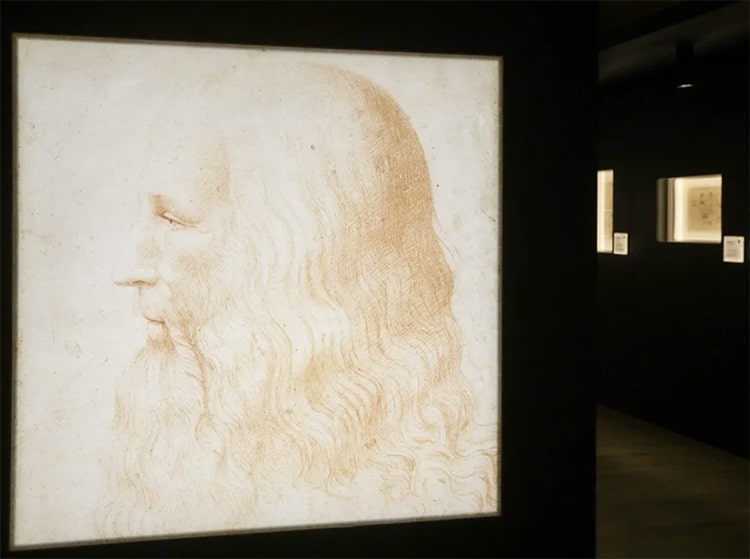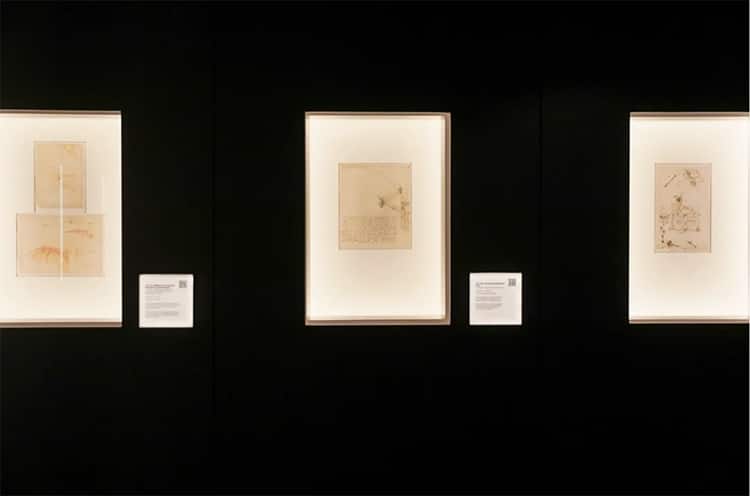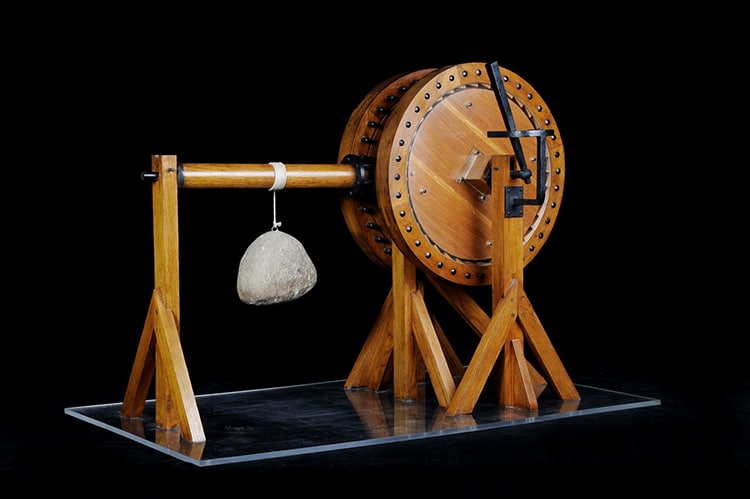His portfolio of work ranges from his most recognizable masterpiece, theMona Lisa, to hisVitruvian ManandThe Last Supper.
His brilliance was virtually endless, touching realms of art, science, and engineering.
He designed hoists to lift heavy objects and weapons for use in warfare.

The free exhibit of Codex Atlanticus in D.C. (Photo:Ralph Alswang via D.C. Public Library)
Meanwhile, he was also a student of human anatomy and angles.
His notebooks are packed with knowledge.
Da Vinci’s writings and sketches date to between 1478 and 1519.

The free exhibit of Codex Atlanticus in D.C. (Photo:Ralph Alswang via D.C. Public Library)
The Codex normally lives at Milans Biblioteca Ambrosiana.
The pages are delicate and extremely light sensitive.
The dozen pages currently on display will only be viewable for two months to limit their exposure.

A modern hoist machine built from a 1480 design in the Codex Atlanticus. (Photo: Museo nazionale della scienza e della tecnologia Leonardo da Vinci, Milan viaWikimedia Commons,CC BY-SA 4.0)
After the exhibit ends, they will rest in darkness for three years.
If you cannot make it to D.C., the Codex can also be exploredonline.
A modern hoist machine built from a 1480 design in the Codex Atlanticus.